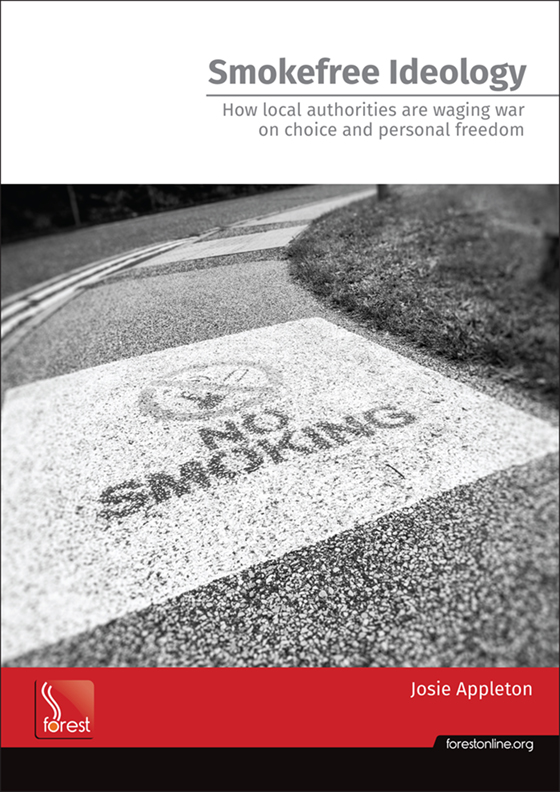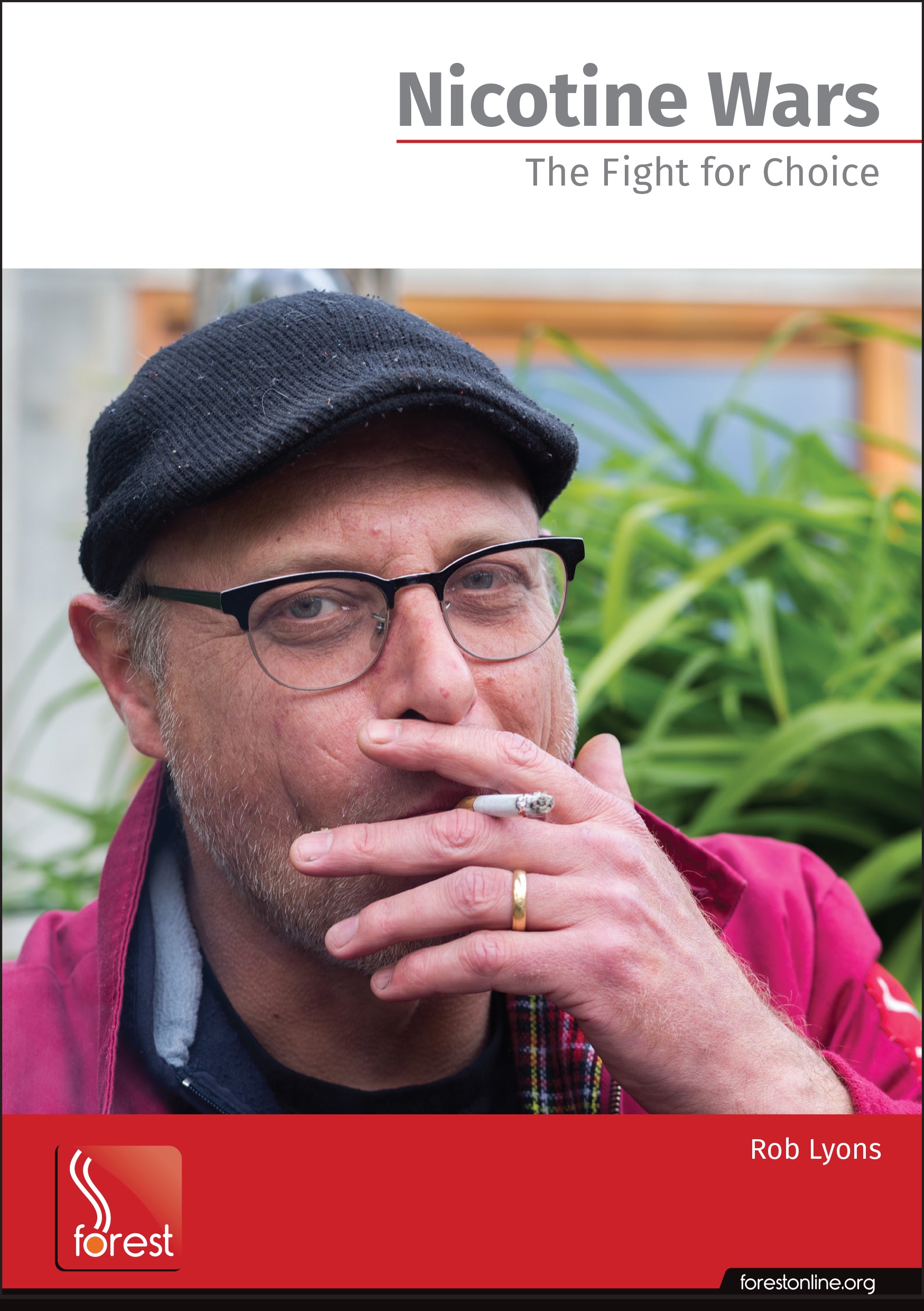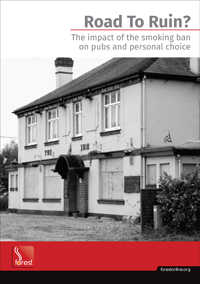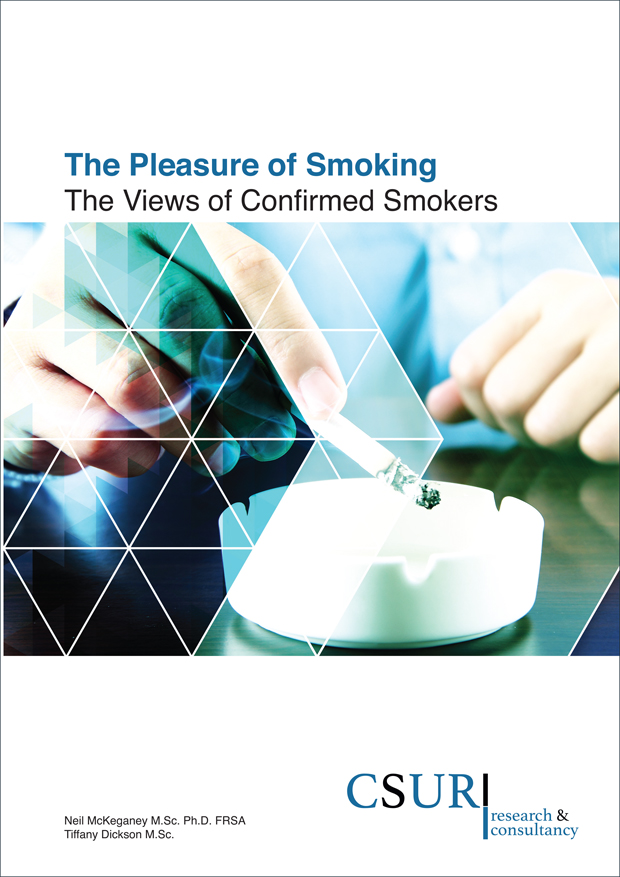Spot the difference: how the Advertising Standards Authority changed its tune
 Wednesday, July 30, 2014 at 16:14
Wednesday, July 30, 2014 at 16:14 Further to my previous post, Marketing magazine has covered the story here:
Forest slams ASA decision on DoH smoking ad claims
There are so many angles to this dispute I don't know where to start, but it's interesting to note the ASA's extraordinary U-turn between June and July.
On June 10, when the ASA executive upheld (for the third time) our complaint against the Department of Health "mutation" ad, they wrote:
The ASA acknowledged that the DH had provided a range of peer-reviewed papers. We took expert advice. We noted that the papers supported higher mutation rates among smokers versus non-smokers and acknowledged the DH’s assertion that this was evidenced by the linear dose-response relationship between cigarettes smoked.
We noted that not all the papers presented discussed smoking [my emphasis] and the linear dose-response relationship used to calculate mutation accumulation. However, we were satisfied that the papers suggested that there may be a linear dose-response relationship between mutations and cigarette smoking. We considered the selection of mutation rates derived from the whole genome sequencing data and noted that they were estimated mutation rates per cigarettes smoked.
We noted that only one of the papers [my emphasis] provided formed the basis of the claim in the ad, that “every 15 cigarettes you smoke will cause a mutation”. That paper was based on a sample derived from the bone marrow metastasis of one patient [my emphasis] with small cell lung cancer.
The patient’s smoking history was not recorded [my emphasis], but we understood that the sample had histological features associated with tobacco smoking and therefore it was possible to identify mutations that arose specifically from smoking. The claim was not appraised in the detailed results section of the paper and appeared only in the discussion part, therefore it was not possible to establish how the figure of 15 cigarettes had been calculated [my emphasis].
We also noted that the claim was prefixed with several caveats [my emphasis], “On average, lung cancer develops after 50 pack-years of smoking ... If the majority of mutations derive from the mélange of mutagens present in tobacco smoke, the clone of cells that ultimately becomes cancerous would acquire, over its lifetime, an average of one mutation for every 15 cigarettes smoked.”
We considered that the paper, and the selection of estimated mutation rates from whole genome sequencing, indicated that there was an average of one mutation per 15 cigarettes smoked but that this figure was open to variance [my emphasis].
Because the ad made a definitive claim that a mutation would arise from every 15 cigarettes smoked, which was not supported by the evidence [my emphasis], we concluded that the ad was misleading.
The ad breached BCAP Code rules 3.1 (Misleading advertising) and 3.9 (Substantiation).
Action
The ad must not appear again in its current form. We told the Department of Health that in the absence of sufficient evidence [my emphasis] they should not make definitive claims for the number of cigarettes that would cause a mutation in future.
Somehow, five weeks later, the ASA Council took a very different position. Rejecting our complaint – and their own executive's recommendation – their assessment now read:
The ASA acknowledged that the DH had provided a range of peer-reviewed papers. We took expert advice. We noted that the papers supported higher mutation rates among smokers versus non-smokers.
We noted that not all the papers presented discussed smoking and the linear dose-response relationship used to calculate mutation accumulation. However, we were satisfied that the papers indicated that a broadly linear dose-response relationship between mutations and cigarette smoking existed. We considered the selection of estimated mutation rates per cigarette smoked derived from the whole genome sequencing data in the papers.
One of the papers provided supported the basis of the claim in the ad, that "every 15 cigarettes you smoke will cause a mutation". That paper was based on a sample derived from the bone marrow metastasis of one patient; we understood that the sample had histological features associated with tobacco smoking and therefore it was possible to identify mutations that arose specifically from smoking.
Additional data supplied by the DH [my emphasis] included a selection of estimated mutation rates from whole genome sequencing of 21 subjects. It showed that the majority of those cancerous cells sequenced had more than one mutation per 15 cigarettes smoked, and that only a small number had a mutation rate per cigarette smoked that was less than the number claimed. The data suggested that the average number of mutations per cigarette smoked was significantly higher than indicated by the 15 cigarette figure in the ad and we therefore considered that the DH had presented a conservative figure which ensured the claim was not exaggerated.
Because the ad made a conservative claim, which was supported by the evidence, we concluded that the ad was substantiated and unlikely to mislead.
We investigated the ad under BCAP Code rules 3.1 (Misleading advertising) and 3.9 (Substantiation) but did not find it in breach.
Action
No further action necessary.
The crucial words here are 'Additional data supplied by the DH'.
When did the DH supply this 'additional data'? Was it before or after the ASA executive submitted its (third) draft recommendation upholding our complaint? Or was it earlier?
The DH was given every opportunity to challenge our complaint. Officials even had a meeting with the ASA executive.
Yet the DH clearly failed to convince the ASA officials because as late as June 2014, when the executive drafted its third recommendation, the ASA was still upholding our complaint.
Something – I don't know what – happened between then and July 18 when the ASA Council met to consider the recommendation.
If new evidence was produced why wasn't Forest made aware of it so we could challenge it?
More to the point, why didn't the DH produce this evidence at the very beginning of this farcical process?
Perhaps, like me, you're beginning to think the evidence didn't exist when the ad was commissioned and broadcast and the DH has spent a large part of the last 18 months trying to find evidence to support the claim that 'Every 15 cigarettes you smoke will cause a mutation'.
Whatever the outcome of our complaint, the DH and their allies on the ASA Council has come out of this very, very badly.
The people I feel sorry for are the ASA staff whose recommendation that our complaint be upheld was rejected.
To have all that hard work undone by a bunch of part-time quangocrats must be incredibly frustrating. Humiliating, even.
Writing to Forest on July 19, the ASA executive wrote:
We realise this decision will disappoint you, but thank you nonetheless for taking the trouble to raise the matter with us.
Yes, the decision did disappoint us but, let's be honest, it was no more than we expected.
This is Britain 2014. No-one's allowed to challenge the Department of Health and win.
And that's a fact.
See also: Why the eleventh hour ASA U-turn? (Liberal Vision)
 Simon Clark
Simon Clark
By coincidence the ASA today published an adjudication on another tobacco-related case.
This time it upheld a complaint by Cancer Research UK and ASH, among others, against the tobacco company JTI.
Full story, including JTI's response, here:
JTI to appeal ASA ruling on 'misleading' plain packs ad (The Grocer).
How odd that a complaint about an ad published in April 2013 should be published one week before the closing date for the Government's final consultation on plain packaging.
Spooky.











Reader Comments (7)
Reference "Additional data supplied by the DH [my emphasis] included a selection of estimated mutation rates from whole genome sequencing of 21 subjects."
Simon, the DH supplied this data to both myself and the ASA in March 2013.
Specifically the DH supplied an extract from the Broad Institute paper ("Mapping the hallmarks of lung adenocarcinoma with massively parallel sequencing").
The extract was a table containing the ESTIMATES of mutation rates of 21 smokers - (estimated mutation rates varied from 0 to 20 in that data set). The data has too many limitations to list here (not least the sample size - and lack of consideration of the wide number of other factors which are known to affect mutations).
In any event this data was (correctly) dismissed by the ASA on its first ruling in November 2013 - and by default the 2nd and 3rd rulings.
So this data was additional (to the study with a sample size on ONE!!) but not new to Council.
Odd twisted standards!
No tobacco control party is worthy of my vote at the next election.
I thought that 15 cigarette claim sounded familiar, here it is in 2009
First cancer genome sequences reveal how mutations lead to disease
"The pattern of mutations in cancer could eventually be used to tailor treatments to particular patients"
"The scientists focused on skin and lung cancer because the environmental causes are well known. Most melanomas are triggered by overexposure to ultraviolet rays in sunlight as a child, while almost all small cell lung cancer is caused by smoking."
"In the case of the lung cancer patient, scientists discovered 23,000 mutations that were exclusive to the diseased cells"
"Genetic sequencing of the skin cancer cells revealed 33,000 mutations caused by exposure to direct sunlight."
""We can say that one mutation is fixed in the genome for every 15 cigarettes smoked," said Peter Campbell, who led the lung cancer part of the study. "That is frightening because many people smoke a packet a day."
But how many exposures to direct sunlight and of what duration had caused the 33,000 mutations does not appear to have been calculated.
http://www.theguardian.com/science/2009/dec/16/cancer-genome-sequences-genetic-mutations
Despite the disappointment, Simon, I definitely think that all of these little drip, drip, drip challenges will wear down the antis over time. Every little chip that we take out of their seemingly-unassailable pedestal, brings us closer to the point at which it collapses entirely under its own artificially-inflated weight. And these constant, badgering, never-say-die challenges are little, tiny chips, whether we win or not.
There’s been so much manipulated “research,” exaggerated statistics, scaremongering, lies, and blatant non-health related persecution that the antis have left themselves open to all number and variety of challenges from all number of fronts – organisations like Forest, individuals like the gentleman in Scotland recently featured in this blog, books by Michael M, trade organisations like the Retailers’ groups, anti-ban blogs, pro-freedom commenters – that there must come a time, somewhere down the line, where some panel, or judge, or committee suddenly realises that they’ve just got to agree with one of the challenges, if for no other reason than because they’ve run out of plausible-sounding (if made-up) reasons for refuting them.
And the antis know this as much as we do, which is why even a case such as this – relatively minor in the great scale of anti-smoking campaigning (it was only one ad, after all) - initiates a whole lot of desperate scrabbling around to find a way – any way – of rebutting even the tiniest challenge to their Gospel Word. They know their foundations are built on sand, which is why even the slightest challenge is regarded as a huge threat which must be defeated at all costs.
Keep the drip-feed going, one and all. Don’t forget that it was through just that – a constant, drip-feed of little anti-smoking tidbits here, there and everywhere – that the anti-smoking movement inveigled itself into the consciousness of the public, despite, in the early days, being regarded as just a bunch of complaining killjoys. So taking a leaf out of their book is not a bad thing. Perseverance is all. Little by little and bit by bit and all that …
Att: Rose2, Simon:
In the lung cancer case study article by Peter Campbell et al, it is stated:
"The smoking history of the patient is not recorded."
(!) But then .. how could Campbell et al know the mutations were caused by smoking? This is how:
"However, the specimen showed histologically typical small cells with classic neuroendocrine features: >97% of such tumours are associated with tobacco smoking."
And then they cite two older, classic type non-representative epidemiological statistics (case-control studies).
So the authors assume on the basis of the "features of the cells", that the patient is a smoker, but they don't know. They also don't know how much he smoked, if he did - and they don't know what other kinds of smoke (pollution, occupational, etc) or other risk factors he had been exposed to.
Furthermore the 15 cigarettes-claim is not even a claim. It is presented as an "if" in the discussion part of the article:
"If the majority of mutations derive from the mélange of mutagens present in tobacco smoke, the clone of cells that ultimately becomes cancerous would acquire, over its lifetime, an average of one mutation for every 15 cigarettes smoked."
Again: they assume that "the majority" of the mutations in the patient's cells is caused by smoking. Why? How many? And how do they know? They don't.
The study is build on the assumption from the epidemiological evidence: The assumption that the disease differences between cases and controls are caused by smoking. Since the authors don't know that and have no way of knowing it, the study cannot determine a cancer risk from smoking. In fact, even if the patient was a heavy smoker, all the mutations could have developed from other factors than smoking. After all, almost all ingredients in tobacco smoke, like PAH's and acrolein exist in many sources, that humans are exposed to every day.
http://www.nature.com/nature/journal/v463/n7278/full/nature08629.html
That is definitely not the impression you get from the Guardian article or the TV-ad.
Klaus K. Thank you for that. A succinct, well-informed refutation of absurdity.
May the day come when lies wither under the light of truth.